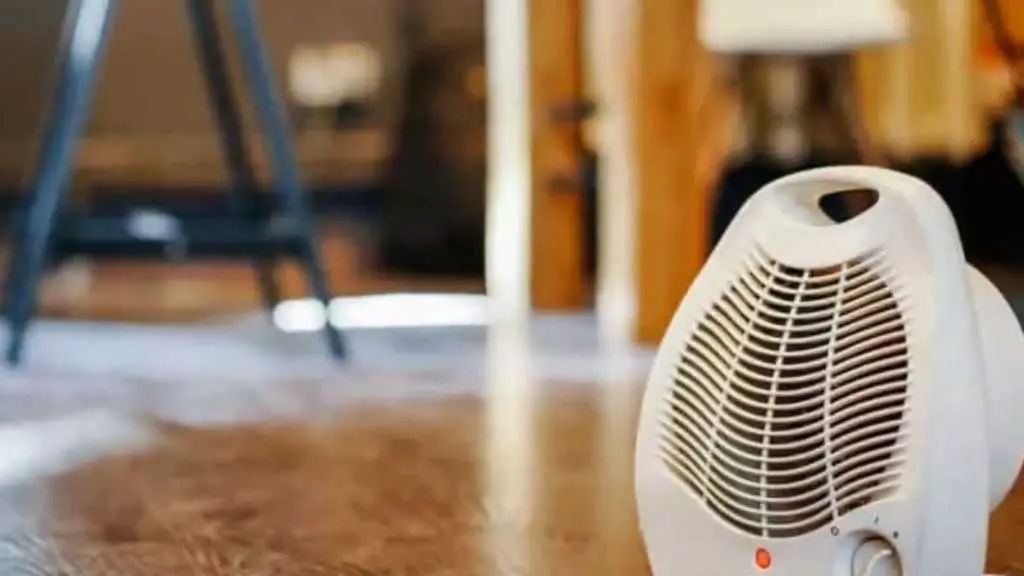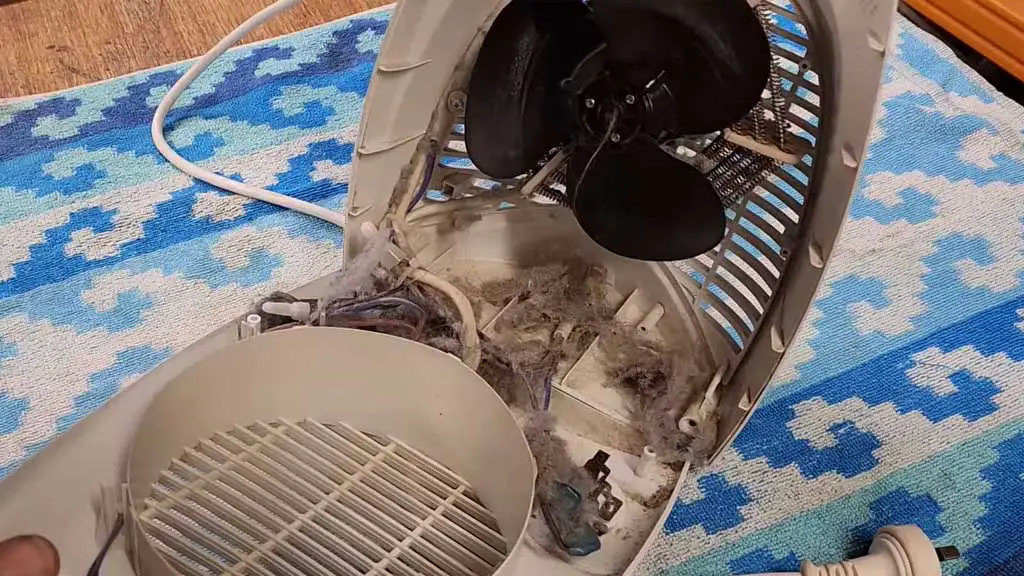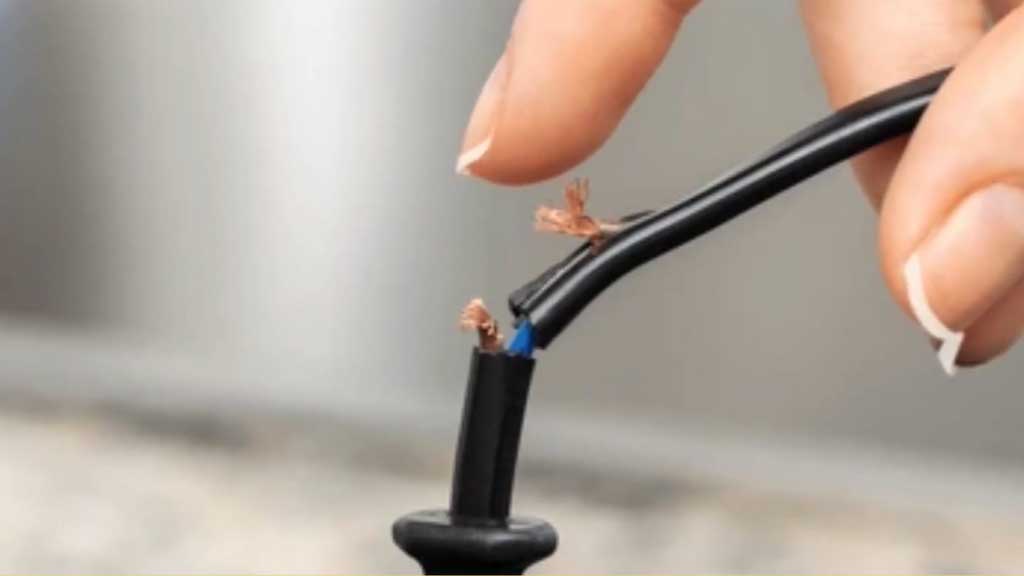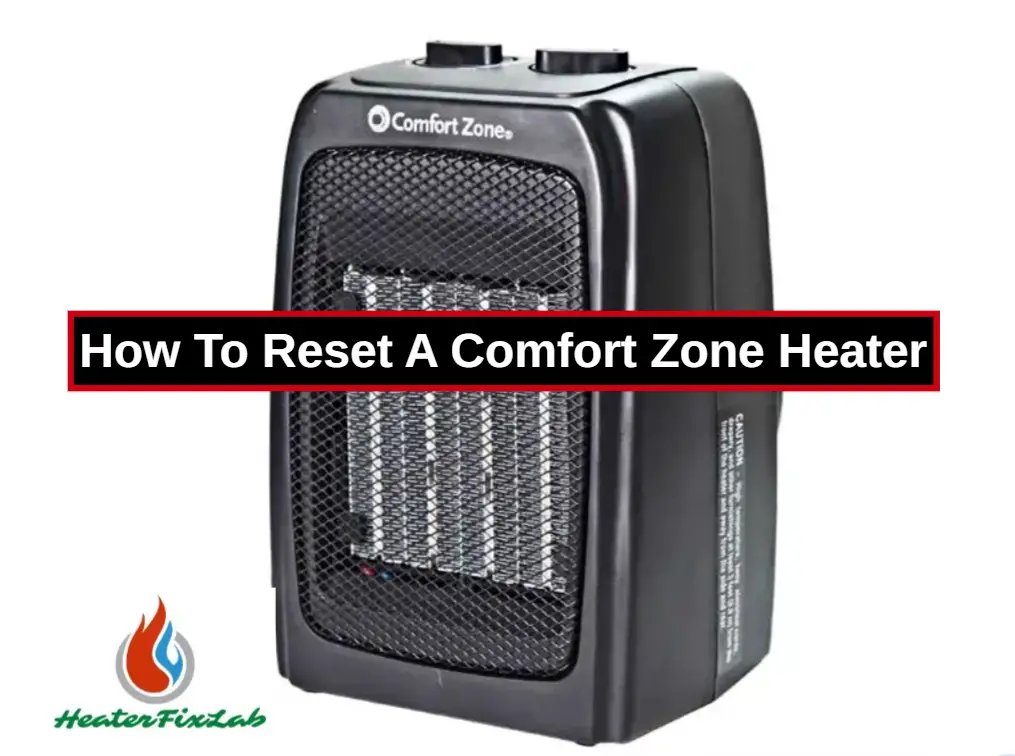When you are dealing with error codes or issues in your Comfort Zone heater, the first thing you should do is reset it. But you may not know how to do it, as there’s no reset button to begin with.
Now that you’re out of the pleasant, warm air with your cold hands in your pocket to give yourself some warmth, you must be thinking about how to reset a comfort zone heater.
Don’t worry, Jack, I got your back. It’s a very simple process, and you’ll learn all about it. I’ll share some additional tips as well to make it easy for you to fix the issues with your Comfort Zone heater.
How To Reset A Comfort Zone Heater
[Complete Guide]
Alright, let’s cut to the chase. Now, there are 2 ways to reset a Comfort Zone heater. The simple way to do it is more like resetting the heater. Let’s take a quick look at how to do it:
- Turn off the heater and unplug it from the power outlet.
- Leave it unplugged for ten to fifteen minutes.
- Then, turn on the power to the heater and see if the unit works properly.
It’s a good idea to do this because if there are any issues with the heater due to any temporary glitches, it could clear up. Try it and see if that solves the issue that you’re dealing with.
But let’s be honest—it’s not a proper reset. It’s more like restarting the heater. But how do you reset the heater when there’s no comfort zone heater reset button?
Luckily, there is a way, and you won’t have to waste your time searching for the comfort zone heater reset button location, as it simply doesn’t exist. Now, here’s how you can do it:
Press and hold all the buttons, including the power button, to reset your Comfort Zone heater. Depending on the model, how long you should hold it may vary. But I’d suggest holding them down together for at least 10 seconds—to 2 minutes—to reset the unit.
The time varies a little bit because some models operate differently. But if you hold it for long enough, the unit should reset.
When Should You Reset The Comfort Zone Heater?
Resetting the heater isn’t something you should randomly do when you feel like it. There are some very specific use cases when you should do it. For example, here are the common scenarios:
1. The Heater Keeps Shutting Off
The goal of using any heater is to get hot air coming out of it to keep you from getting cold. But if it just keeps on turning off, it’s a terrible thing, as you won’t get the hot air you’re supposed to get.

Now, the first thing you should do is try to reset the heater. But if that doesn’t work, you can check out my detailed guide. The usual reasons behind this are:
- Issues with the power supply.
- Incorrect startup procedure for the heater.
- Excessive dirt buildup on the air filter.
- Faulty internal components in the heater.
- A malfunctioning heating element.
You’ll find all the solutions to this problem in my guide in case resetting the heater doesn’t work.
2. Fan Not Working
Another common issue you might face with your Comfort Zone heater is that the top light of the heater turns on but the fan won’t work. First of all, you should try to reset it as shown.

If that doesn’t work, you can still get your Comfort Zone heater fan to work. Sometimes there can be a power fault inside the heater that can also cause the AO5 error code. Some other reasons are:
- Incorrect thermostat settings.
- Accumulation of dust and debris.
- Problems with the wiring.
- A broken or malfunctioning fan.
You’ll also find all the solutions to these problems in that guide. Don’t worry, it’s all solvable, and I’ve shared how you can fix this issue in detail.
3. Other Heater Issues
Are you thinking about how to reset the comfort zone heater after multiple resets? Sometimes, the issue in your heater can prompt you to reset the heater more than once. For example, there could be wiring issues.

Some of those common issues have error codes in your heater, then there’s dealing with things like a faulty thermal cut-off.
A lot can go wrong with your heater. You need to take the right corrective steps for that. But before doing any of that, you need to reset it in hopes that the issue will go away.
What Should I Do If The Heater Won’t Reset?
Sometimes, you won’t be able to reset the heater even after trying my suggestions. In that case, you can follow these steps:
- Check Power Supply: Ensure the heater is properly plugged into a functioning power outlet. Avoid using extension cords or power strips.
- Inspect for Loose Connections: Open the unit (only if comfortable and safe) to check for loose internal wires or connections.
- Clean the Heater: Dust and debris can block sensors or vents, causing the unit to malfunction. Clean filters and internal components.
- Perform a Longer Reset: Hold all buttons, including the power button, for at least 2 minutes if shorter resets don’t work.
- Consult a Technician: If the heater still won’t reset, a component like the thermal cutoff or control panel might need replacement.
How To Maintain Your Heater To Prevent Having To Reset It
If you maintain some basic practices, you won’t have to worry about resetting your heater now and then. You can just sit, relax, and enjoy the nice warm air out of your heater by following these tips:
1. Regular Maintenance Practices
Doing basic things like cleaning the air filters in your heater can go a long way in making sure that it runs smoothly. When the heater is used over a long period without any maintenance, it gathers dust.
It can block airflow, overheat the unit, and strain internal components. Clean the heater’s air filters regularly by following the manufacturer’s instructions.
Use a soft brush or vacuum to remove debris from vents and other openings.
2. Inspecting the Thermostat and Internal Wiring
Ensure the thermostat is functioning correctly by testing its settings and response. Periodically check internal wiring for signs of wear, loose connections, or damage. Tighten any loose connections and replace damaged wires with compatible parts.
3. Inspecting the Thermal Cutoff
Test the thermal cutoff by using a multimeter to ensure it works as a safety feature. Replace the cutoff if it shows signs of wear, intermittent continuity, or failure.
4. Routine Dusting
You should clean the surface of the heater from time to time. Wipe the exterior of the heater with a soft, damp cloth to keep it clean. Avoid using harsh chemicals that can damage the unit’s surface.
5. Fan and Blower Maintenance
This is also another clean-up job for you to make sure that your heater lasts longer. Inspect the fan blades and blower motor for dust buildup and signs of wear. Clean the fan and lubricate its motor if recommended by the manufacturer.
FAQs:
How is airflow managed in the Comfort Zone heater during system downtime?
During system downtime, motorized dampers may remain neutral or default, ensuring some airflow is maintained for ventilation.
Do Comfort Zone heaters require regular maintenance?
Yes, regular maintenance, including checking dampers, thermostats, and the control panel, ensures optimal performance and longevity of the system.
What thermostats are compatible with the Comfort Zone heaters?
The system works with specific programmable or non-programmable thermostats. It’s best to consult the product guide or a professional for details on compatibility.
Can I control the Comfort Zone heater system remotely?
Some models allow for remote control using compatible smart devices or apps. Check your system’s specifications for remote-access options.
What if I go on vacation when using the Comfort Zone II system?
Override programs by adjusting Zone 1’s temperature settings and pressing “Hold.” Use “All Zone” to apply these settings to all zones. Reset to programmed settings upon return by pressing “All Zone” and “Hold.”
Conclusion
Now, you know all about it in detail. Even if it doesn’t reset immediately, now you have concrete measures to attempt again and again to find the correct solution for you.
There should be no confusion about the resetting procedure after you’ve gone through this guide. If the issue persists even after resetting the heater, try to look up the fixes or consult a technician to solve it. Good luck!

